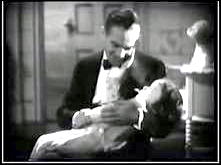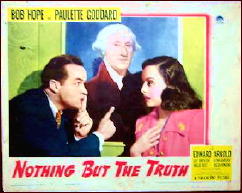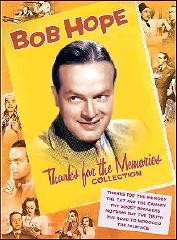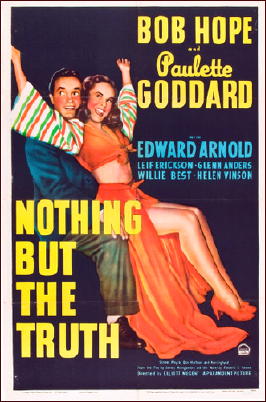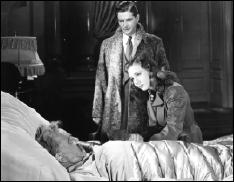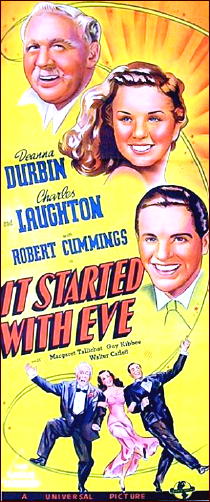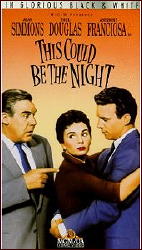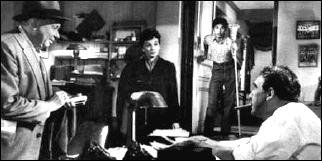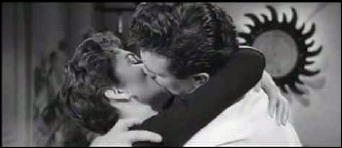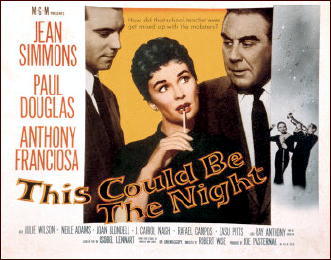Fri 28 Jan 2011
A Movie Review by Michael Shonk: THE MAD MISS MANTON (1938).
Posted by Steve under Films: Comedy/Musicals , Mystery movies , Reviews[19] Comments
THE MAD MISS MANTON. RKO Pictures, 1938. Cast: Melsa Manton: Barbara Stanwyck, Peter Ames: Henry Fonda, Lt. Brent: Sam Levine, Sullivan: James Burke. Screenplay by Philip G. Epstein. Director: Leigh Jason.

It is rare to find a comedy mystery with a strong enough mystery to equal the comedy. The Mad Miss Manton is screwball comedy mystery at its best.
While walking her dogs at 3 am, debutant Melsa Manton discovers a dead body in an old house. She runs to notify the police, but when she returns with them the body is gone and the cops are convinced it is all a prank. Young newspaper editor Peter Ames uses the “prank” to ridicule Miss Manton and the idle rich lifestyle.
Melsa enlists the help of her closest seven friends to help her clear her name. Eight determined debutantes out to find a killer. The cops, the press, even the killer are doomed.

The murder mystery plot could stand on its own without the comedy and make a good typical RKO B-movie mystery. What follows Melsa’s discovery of the body is a mystery that will keep you guessing until Melsa finds the final clue. The story features a variety of suspects, all involved in one kind of relationship or another.
In screwball comedy tradition, Peter and Melsa hate each other. Peter hates Melsa so much he falls in love with her. But whenever Melsa’s begins to weaken towards Peter the mystery interrupts, and Melsa’s feelings for him return to hate.
Reacting to Peter and Melsa, two of the debutantes exchange comments that sums up the philosophy of all screwball comedies.
“Yeah, but it’s the lull in between that drives you crazy.”

Director Leigh Jason maintains the frantic pace of the screwball comedy without losing any of the tension of the mystery. He also effectively uses the entire cast, especially the pack of debutantes, giving each character their own identity.
From the opening titles on, the film’s dark look creates an atmosphere fitting for the murder mystery, not letting the screwball comedy overwhelm the suspense. Cinematographer Nicholas Musuraca would later be the cinematographer for Out of the Past.
The main attraction of The Mad Miss Manton is Philip G. Epstein’s (Casablanca, Arsenic & Old Lace) script in the hands of Barbara Stanwyck and Henry Fonda. The chemistry between Fonda and Stanwyck works as well for this film as it will later in Lady Eve.

The comedy and mystery blends well in The Mad Miss Manton, each playing off the other. Peter is at the first murder scene where the debutantes left him bound and gagged. The young ladies find a second murder victim. Believing it to be another hoax, the police refuse to respond. So the women take the second body and leave it in the lobby of Peter’s newspaper.
When asked why, Melsa explains, “I thought if you read it in the paper you’d believe us.”

The screwball comedy genre is skilled at dealing with sexual attraction between characters. When Peter learns the killer has threatened Melsa, he runs to her rescue. Melsa is trying to sleep, but he insists he is spending the night there. Melsa mockingly congratulates Peter, of all the attempted subterfuge of others to remain in her bedroom, his is the best.
The atmosphere, twists, and clues will appeal to those in search of a good B-movie murder mystery. Those looking for a funny screwball comedy will enjoy the non-stop wisecracks, gags, slapstick and wit. Unless you are one of the young men the debutantes dump without a word whenever the mystery surfaces, The Mad Miss Manton will prove entertaining.
You can find more about this film, including the original trailer, at TCMdb.com. It is available on DVD from Warner Archive Collection.









